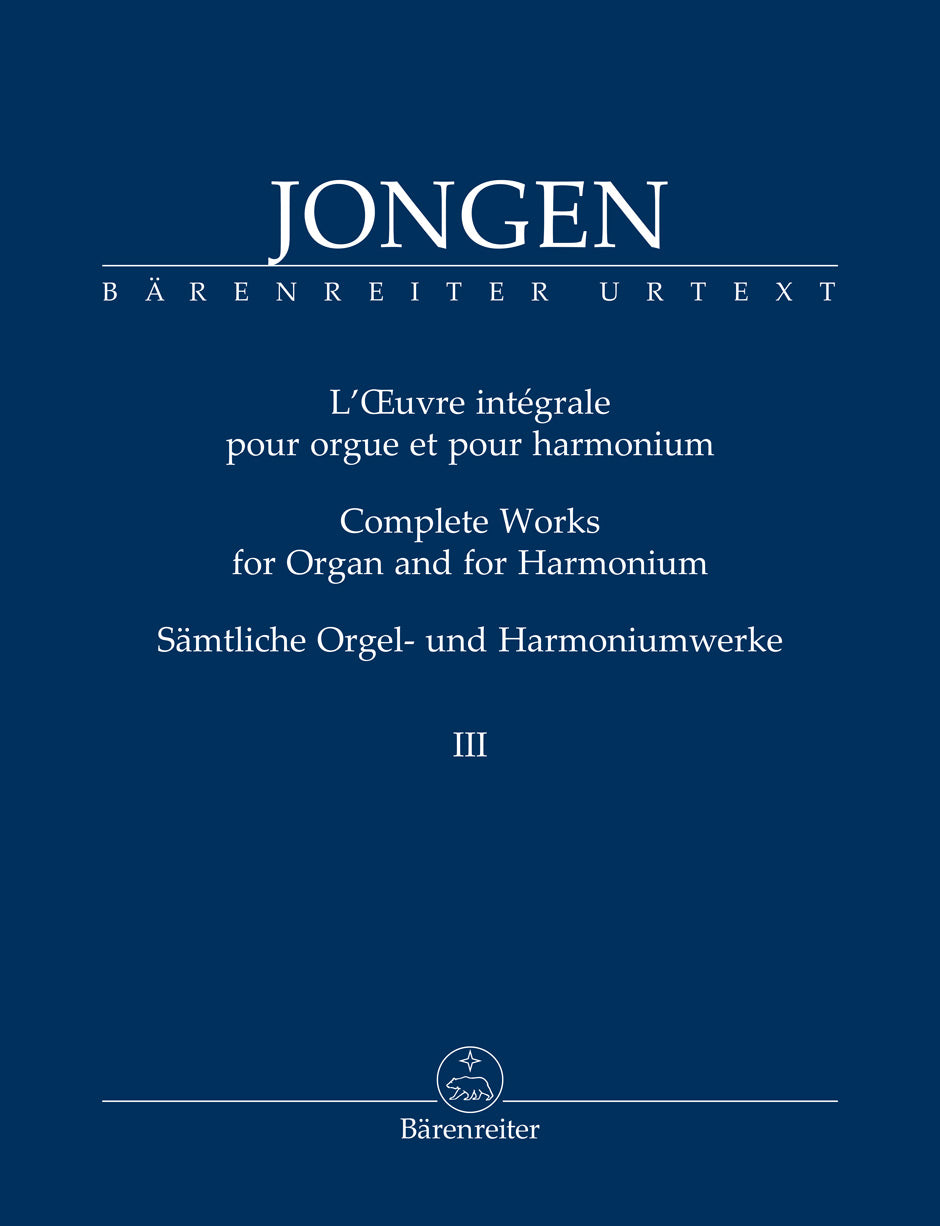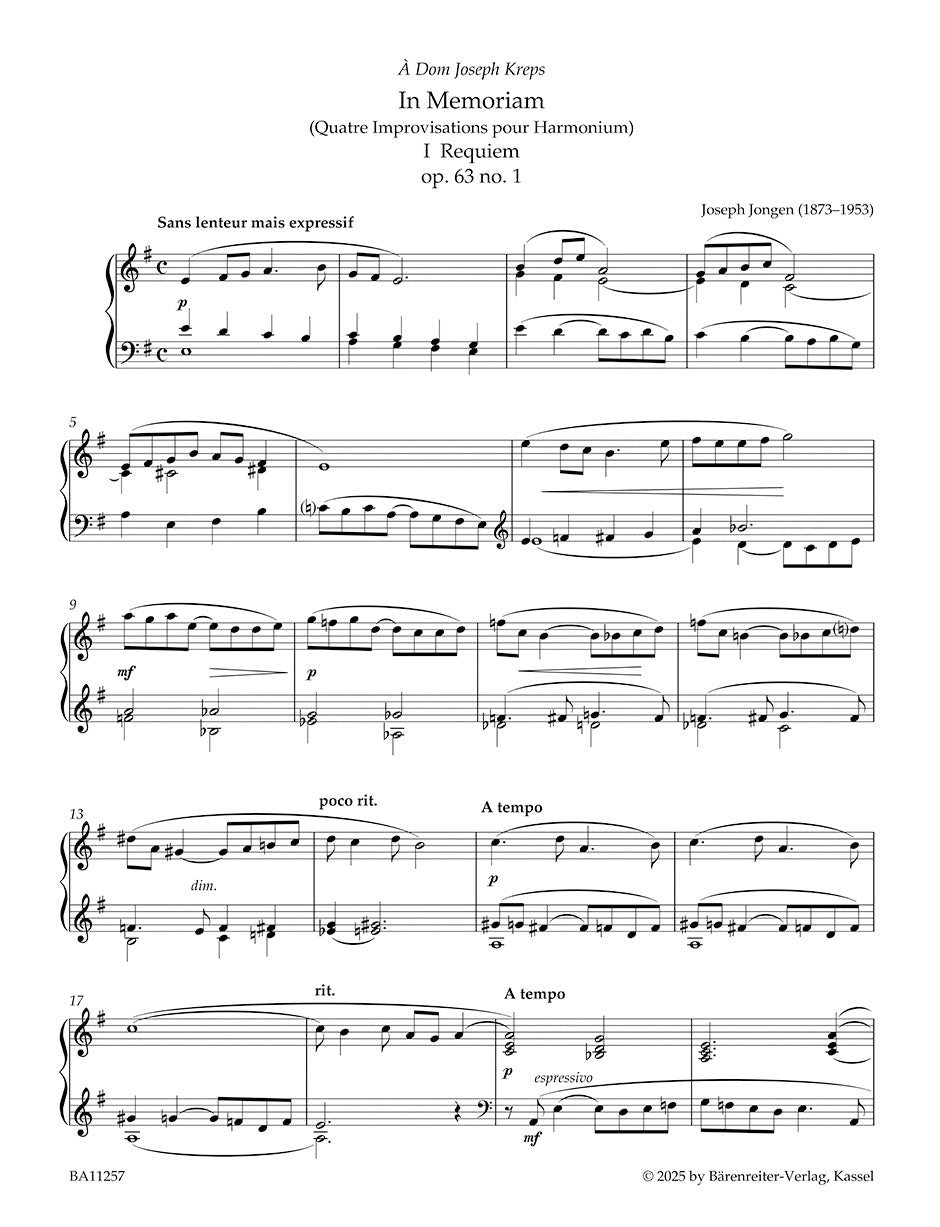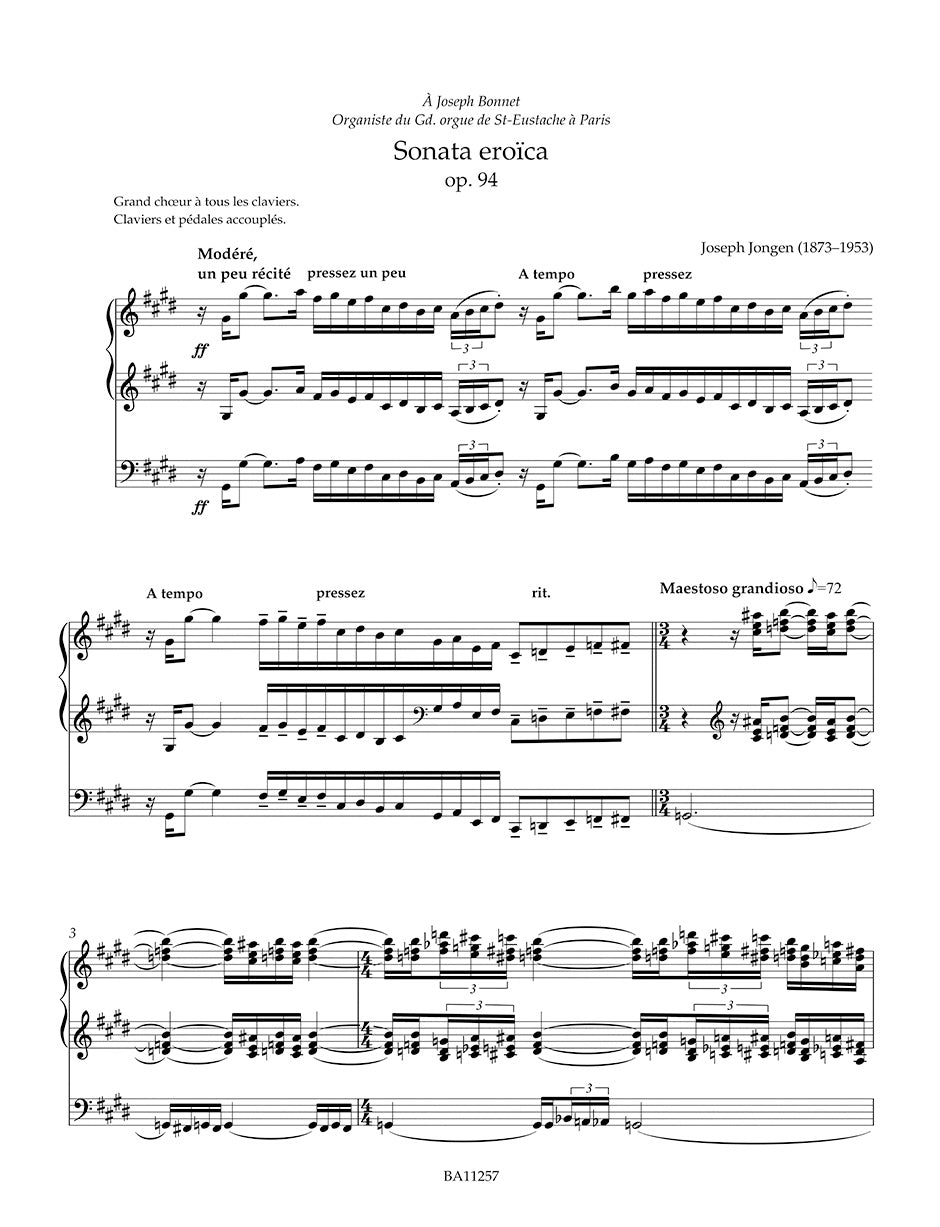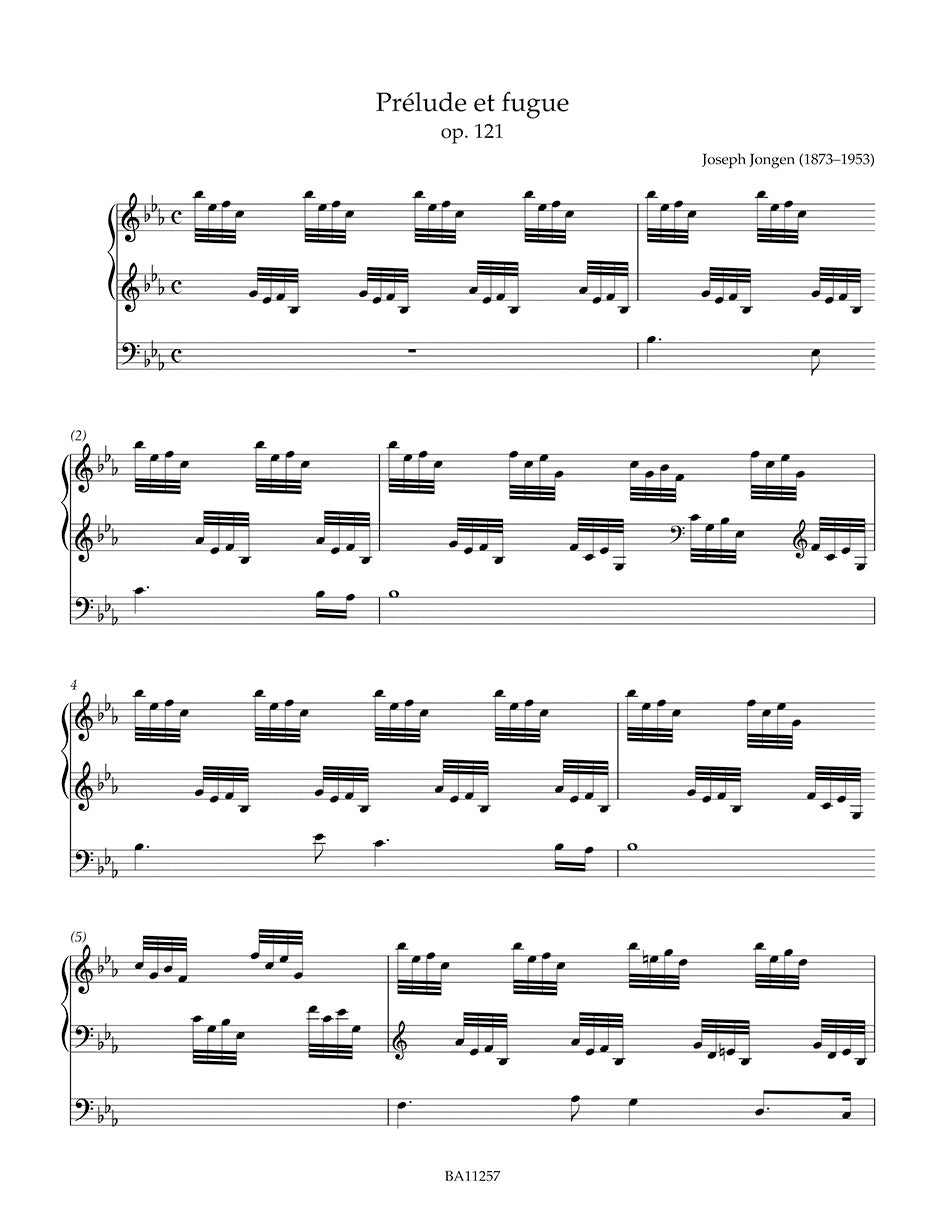Jongen: Complete Works for Organ and Harmonium - Volume 3
Expected to ship in about a week.
- Composer: Joseph Jongen (1873-1953)
- Editor: John Scott Whiteley
- Instrumentation: Organ, Harmonium
- ISMN:
- Size: 9.1 x 11.8 inches
- Pages: 108
- Urtext / Critical Edition
Description
The "Sonata eroïca", the organ work that was to become his compositional hallmark, was written by Joseph Jongen (1873–1953) in probably just five days between 18 and 25 September 1930. He evidently composed his opus 94 from beginning to end with precise foresight of the respective steps, as the extremely neatly written autograph indicates. Composed as a commission for the inauguration of the new Stevens organ for the Brussels Palace of Fine Arts, the "Sonata" is probably his best-known work today and is included in the third volume of this edition.
Similar to César Franck, who was also born in Liège, Jongen found a recognisable musical language in his oeuvre, which is characterised, among other things, by harmonic colourfulness, references to chorale singing and Walloon folklore.
Jongen's organ works include compositions of varying degrees of difficulty, from simpler pieces notated on two systems to virtuoso works for the professional organist.
This first Urtext edition which is also the first complete edition of Jongen's organ and harmonium works presents the compositions in three volumes, arranged chronologically. The edition includes a Foreword (Eng/Ger) with notes on performance practice and a Critical Commentary (Eng).
Contents:
- in Memoriam (Quatre Improvisations pour Harmonium), Op. 63
- I Requiem No. 1, Op. 63
- II Pie Jesu No. 2, Op. 63
- III Quid sum miser No. 3, Op. 63
- IV Recordare Jesu pie No. 4, Op. 63
- Quatre Pièces pour Harmonium
- I Allegretto W. 217
- II Évocation héroïque W. 218
- III Menuet gracieux W. 219
- IV Marche solennelle W. 220
- Sonata eroïca, Op. 94
- Toccata, Op. 104
- Petite Pièce W. 313
- Petit Prélude (Aria) W. 319
- Petit Caprice W. 375
- Deux Pièces pour orgue, Op. 108
- Scherzetto No. 1, Op. 108
- Prière No. 2, Op. 108
- Improvisation-Pastorale W. 338
- Prélude et fugue, Op. 121
- Gaudeamus Verset pour la Fête de l'Assomption W. 350
- Appendix 1: Légende W. 287
- Appendix 2: Sonata eroïca – ossias
Works:
- In Memoriam, Op. 63
- Allegretto, W. 217
- Évocation héroïque, W. 218
- Menuet gracieux, W. 219
- Marche solennelle, W. 220
- Sonata Eroïca, Op. 94
- Toccata, Op. 104
- Petite Pièce, W. 313
- Petit prélude, W. 319
- Petite Caprice, W. 375
- 2 Pieces, Op. 108
- Improvisation-Pastorale, W. 338
- Prelude and Fugue, Op. 121
- Gaudeamus Verset, W. 350
Publishers use a lot of words to describe what they sell, and we know it can be confusing. We've tried to be as clear as possible to make sure you get exactly what you are looking for. Below are descriptions of the terms that we use to describe the various formats that music often comes in.
Choral Score
A score for vocalists that only contains the vocal lines. The instrumental parts are not there for reference. Generally, cheaper than a vocal score and requires multiple copies for purchase.
Facsimile
Reproductions of the original hand-written scores from the composer.
Full Score
For ensemble music, this indicates that the edition contains all parts on a single system (there are not separate parts for each player). In larger ensembles, this is for the conductor.
Hardcover
Hardbound. Generally either linen-covered or half-leather.
Orchestral Parts
Similar to a wind set, this is a collection of parts. In the case of strings, the numbers listed are the number of copies included, though generally these are available individually (often with minimum quantities required).
Paperback
When publishers offer multiple bindings (e.g. hardcover) or study scores, this is the "standard" version. If you're planning to play the music, this is probably what you want.
Performance / Playing Score
A score of the music containing all parts on one system, intended for players to share. There are not separate parts for each player.
Set of Parts
For ensemble music, this indicates that there are separate individual parts for each player.
Solo Part with Piano Reduction
For solo pieces with orchestra, this is a version that contains a piano reduction of the orchestra parts. For piano pieces, two copies are typically needed for performance.
Study Score
A small (think choral size) copy of the complete score meant for studying, and not playing. They make great add-ons when learning concertos and small chamber works.
Vocal Score
A score prepared for vocalists that includes the piano/organ part or a reduction of the instrumental parts.
Wind Set
For orchestral music, this is a collection of wind and percussion parts. The specific quantities of each instrument are notated.
With Audio
In addition to the printed music, the edition contains recordings of the pieces. This may be an included CD, or access to files on the internet.
With / Without Fingering (Markings)
Some publishers prepare two copies - a pure Urtext edition that includes no fingering (or bowing) suggestions and a lightly edited version that includes a minimal number of editorial markings.






